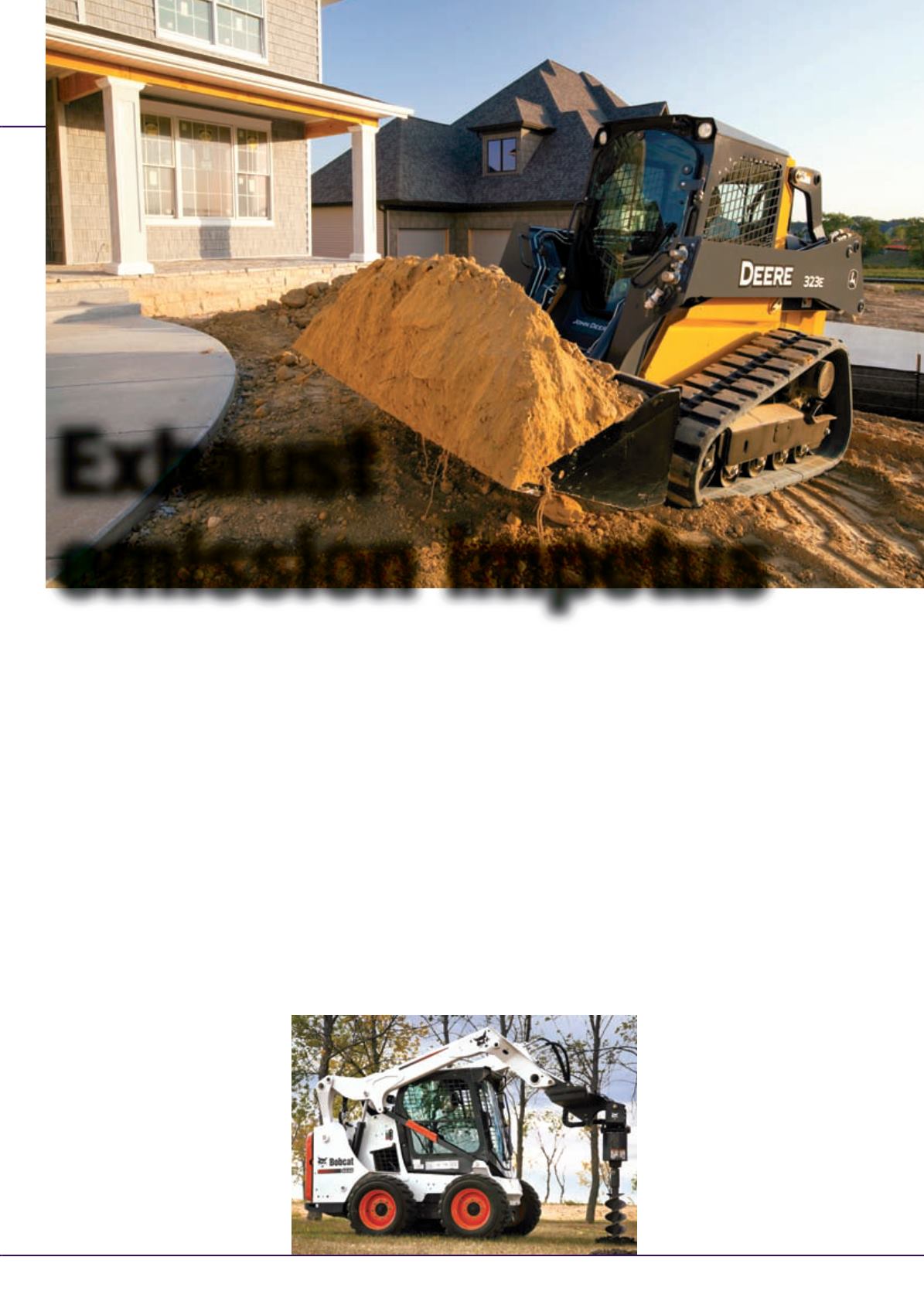
39
january-february 2014
international
construction
New emission laws have prompted a rush of new compact equipment launches, particularly skid steer
and compact tracked loaders. Better fuel efficiency, more powerful performance and new features are
hallmarks of these new machines.
Chris Sleight
reports.
Exhaust
emission impetus
T
his year sees a further step in exhaust emissions requirements
for diesel engines used in off-highway machines. These will
have a limited impact on compact construction equipment
in the US and Europe, but they are still translating to plenty of
new machine launches.
For smaller engines – less than 55 kW, the standards that
have to be met are already in force. In Europe there is no new
requirement for these smaller units, with emissions legislation
stopping some years ago at the Stage IIIA or Stage IIIB level. In
the US, requirements for these engine sizes came into force a little
later, but are essentially in place.
However, the flexibility provisions and other allowances to
help manufacturers make a smooth transition from one tier
of regulations to the next, mean that even though laws for sub
56 kW engines may have been in place for a while, machines with
these engines fitted may only just be coming onto the market.
As far as compact equipment is
concerned, the new requirements for
56 kW+ engines will not hit too many
of the more popular sizes of machines
in Europe and the US. You would be
hard-pushed to find a 56 kW engine in
anything smaller than about a 10 tonne
excavator, for example.
Similarly, compact wheeled loaders –
machines with a 1 m
3
standard bucket
capacity or less – would tend to have
engines around or below 55 kW. Whether
the laws impact on these products depends
a little on how you define ‘compact’.
>
Skid steer loaders and compact tracked loaders are a little
different – machines with about a 1 tonne or greater rated
capacity would need something more powerful than 55 kW in a
lot of cases. That would cover what many people would describe
as large skid steer and compact tracked loaders, which can offer
capacities of well over 1.5 tonnes.
The need for lower exhaust gas emissions can mean more
components in the engine compartment. This in itself is quite
a headache for machine designers as they to try to fit these
bulky packages in without adding to the overall machine size or
impeding visibility for the operator.
There will be knock-on consequences for owners and operators.
More components naturally raise the purchase price of machines,
and in the competitive compact sector any price increase will
be keenly felt. More components also means more servicing
requirements, such as periodically having diesel particulate filters
(DPFs) cleaned, or keeping diesel exhaust
fluid (DEF) – products such as AdBlue –
topped up for selective catalytic reduction
(SCR) systems.
However,
iC
has not found any examples
of compact machines using AdBlue. The
main emissions control technologiesi these
classes of machine are in-engine systems
like exhaust gas recirculation, along with
exhaust aftertreatment systems like DPFs.
The flip side of this of course is that
manufacturers can set themselves apart by
producing machines with engines that do
not require aftertreatment systems.
Deere has added four
mid-sized compact
tracked and skid-steer
loaders to its range,
following the launch of
larger models in 2013.
Bobcat’s Tier 4
Final skid steer
and tracked
loaders offer
rated capacities
up to 998 tonnes,
without the
engine needing
a DPF.
COMPACT EQUIPMENT
Exhaust emission impetus


